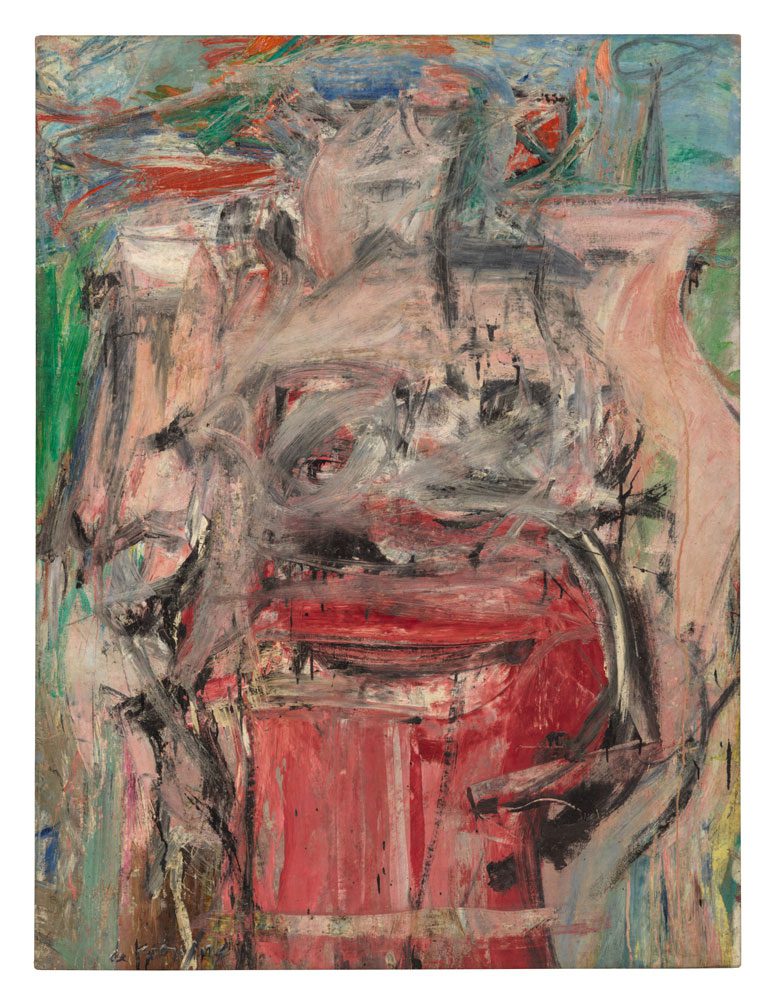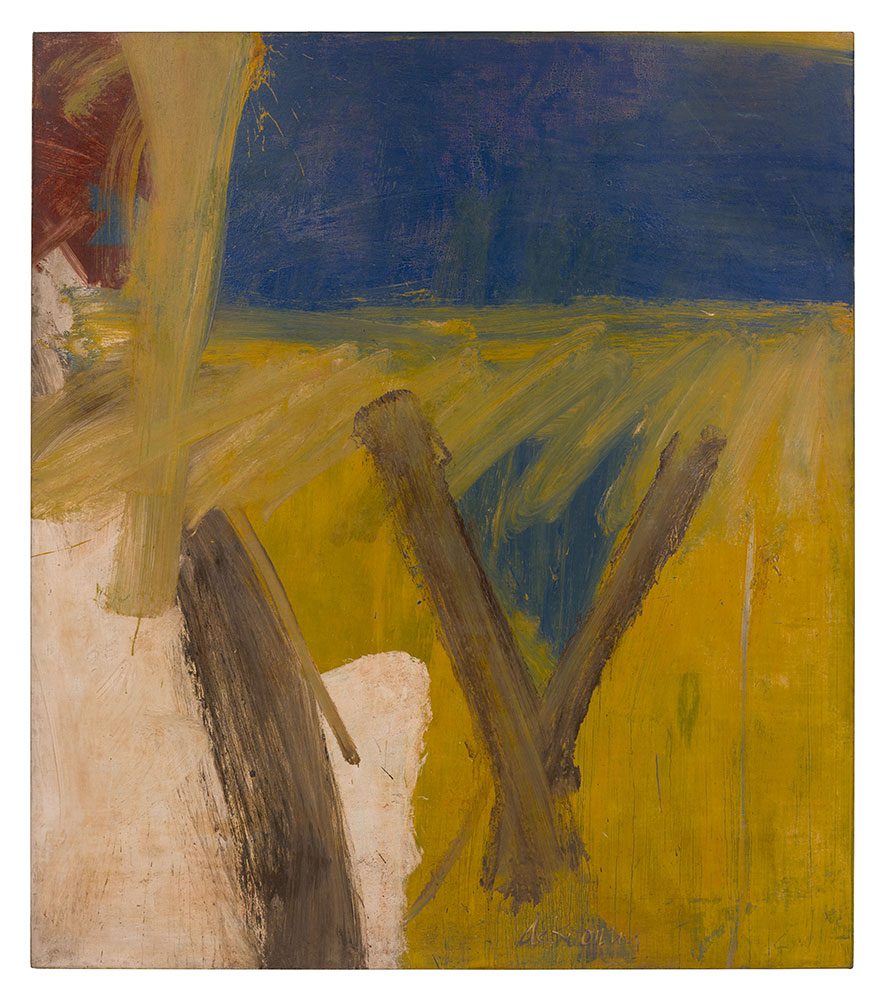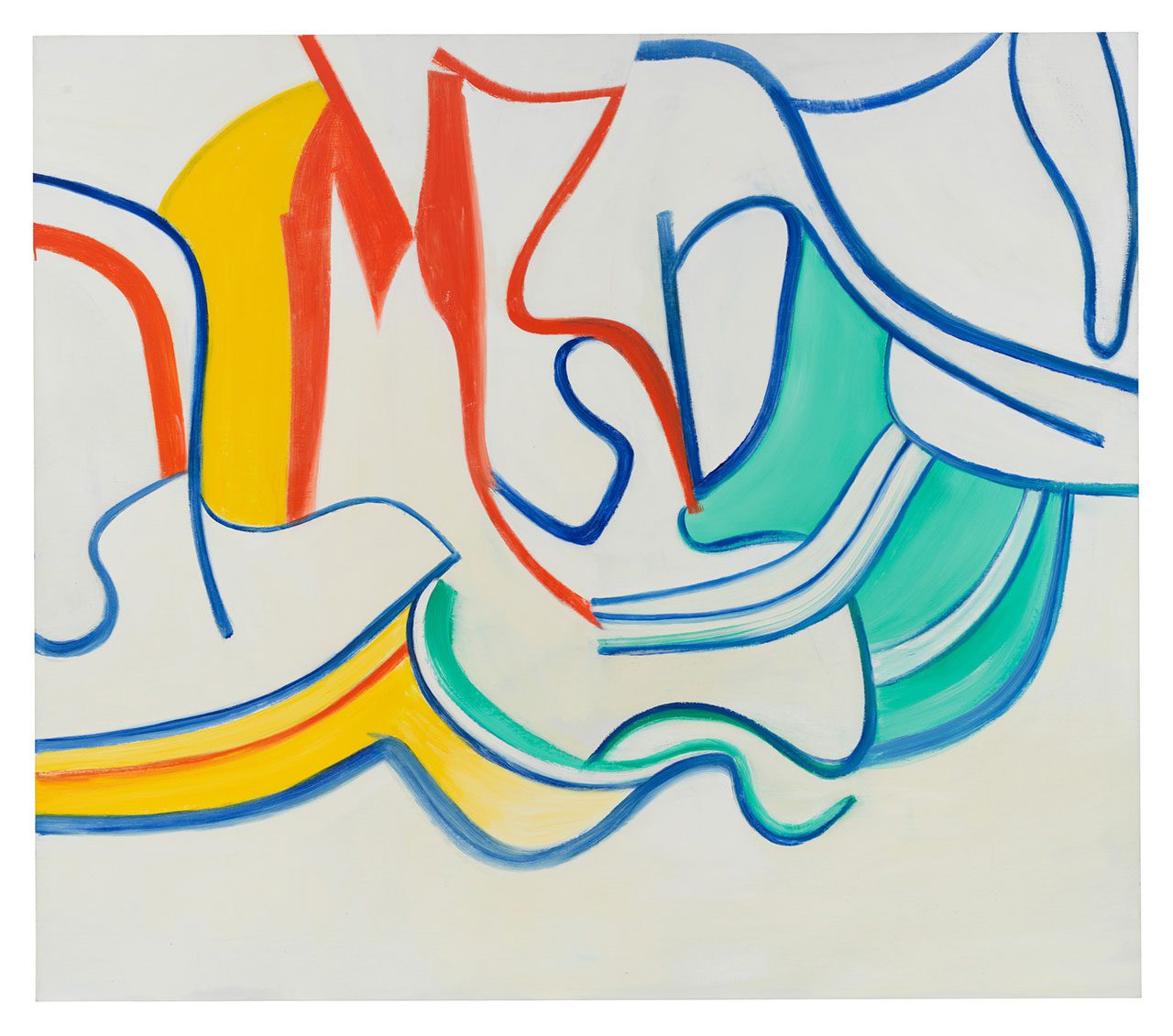PRESENTATION: Willem de Kooning-Endless Painting
Willem de Kooning was a first-generation member of the New York School, a group of American artists who rose to prominence in the mid- to late 1940s and were noted for their dynamic, “allover” approach to abstract painting. Over a career that spanned seven decades, de Kooning’s singular contributions to abstraction and figuration set him apart from his peers, and his influence drastically shifted the direction of postwar American painting.
By Efi Michalarou
Photo: Gagosian Archive
The exhibition “Willem de Kooning: Endless Painting” comprises paintings dating from 1944 through 1986 and two sculptures: “Clamdigger” (1972), and the monumental “Standing Figure” (1969–84). A pioneering figure of the postwar era, de Kooning probed the expressive potential of color, line, and space and continuously challenged the boundaries between figuration and abstraction. Through the considered placement of late paintings including “Untitled V” (1982), on loan from the Museum of Modern Art, New York, and “Untitled XIX” (1984) among works of the preceding decades, the exhibition foregrounds visual motifs that recurred throughout de Kooning’s career. This arrangement reflects the curator’s close investigation of the 1980s paintings through which she identified an expansive repertoire of human forms—elbows, knees, mouths, eyes—that can be traced as far back as the artist’s works of the 1930s and 1940s that drew on Cubism and Surrealism. In “Montauk II” (1969), flesh-toned biomorphic shapes dance in and out of focus, while profiles and limbs appear amid the slippery brushstrokes of . . . “Whose Name Was Writ in Water” (1975), on loan from the Solomon R. Guggenheim Museum, New York. In “Untitled XIV” (1986), the exhibition’s latest work, undulating arms extend energetically across the canvas, mirroring the outspread limbs of “Standing Figure”, a monumental bronze sculpture on view indoors for the first time in nearly three decades. De Kooning often reworked his canvases, reincorporating passages from earlier compositions by tracing shapes he wanted to preserve onto vellum, and even changing their orientation multiple times during their gestation. It was through revisiting and revising his compositions that he developed a consistent but flexible vocabulary of colors and gestures rooted in figuration. “A restless explorer of the canvas, de Kooning never stopped interrogating the possibilities of what painting could be. The exhibition’s title, Endless Painting, references this enduring, ever-evolving visual language and the artist’s professed decision to “just stop” rather than formally finish paintings, perhaps seeking a more expansive definition of the medium itself.
Born on April 24, 1904, in Rotterdam, Netherlands, de Kooning enrolled at the Rotterdam Academy of Fine Arts and Techniques at the age of thirteen, while simultaneously working as an apprentice at a commercial and decorative arts firm. He studied drawing at the academy in the evenings, and at the design firm he learned about decorative painting, creating marble and wood-grain patterns, as well as lettering. This multifaceted education equipped him with a unique skill set that would inform his mature art. In 1926 he arrived in the United States, having stowed away on a British freighter, and settled in New York the following year. It was there, on the opposite side of the Atlantic, that he would first encounter European modernism in depth, prompting him to make still lifes inspired by Henri Matisse. He would also soon meet artists Stuart Davis, Arshile Gorky, and John Graham, who would become close friends. In 1935 de Kooning joined the Federal Art Project, part of the Works Progress Administration (WPA). The experience led him to devote himself to painting. In these early years in New York, his work fluctuated between biomorphic abstraction and more traditional depictions of the figure, from Depression-era men to classical portraits of his wife, the former Elaine Fried, an artist he married in 1943. This seamless transition between styles and subject matter—and resistance to easy categorization—would become hallmarks of de Kooning’s art throughout his long career. In the 1940s de Kooning further developed his particular style of abstraction, frequently creating complex compositions from fragments of figural drawings. These works culminated in his famous black-and-white paintings, which comprised the majority of his first solo exhibition—presented in April 1948 at the Charles Egan Gallery in New York—and were brought to conclusion with larger-scale paintings including Attic (1949) and Excavation (1950). On completion of the latter, de Kooning embarked on the series of Woman paintings for which he is most famous. Six Woman paintings and related drawings were shown together in 1953 at the Sidney Janis Gallery in New York, provoking heated discussion among artists, curators, and critics about the validity of representational art in the era of abstraction. In the second half of the 1950s, de Kooning’s style shifted into abstraction based on landscapes, which he painted with muscular brushstrokes, using what has come to be referred to as “the full arm sweep.” The evolution of these abstract landscapes, from what the curator and critic Thomas Hess termed “urban,” to “parkway” and then “pastoral” over the course of more than five years, mirrored de Kooning’s transition to country life. After spending increasing amounts of time on the East End of Long Island, he designed and built a home and studio there, moving to the area permanently in 1963. Inspired by the region’s diffused light, de Kooning shifted his palette to lighter, rococo hues of pinks, yellows, and blues, and he soon embarked on a new Woman series, this time depicting women exulting in the idyllic landscape. In the last two decades of his career, de Kooning remained a tireless innovator, working in printmaking and sculpture and consistently reinventing his painting style. His works of the mid- to late 1970s are noted for their highly fluid, jewel-toned abstractions of landscapes and seascapes. In the 1980s he gradually altered his method to achieve a minimalistic, yet still highly complex, new style, one he continued to explore through his very last paintings.
Photo: Willem de Kooning, Untitled X, 1985, Oil on canvas, 70 x 80 inches (177.8 x 203.2 cm), © 2025 The Willem de Kooning Foundation/Artists Rights Society (ARS), New York, Photo: Maris Hutchinson, Courtesy Gagosian
Info: Curator: Cecilia Alemani, Gagosian, 555 West 24th Street, New York, NY, USA, Duration: 15/4-14/6/2025, Days & Hours: Tue-Sat 10:00-18:00, https://gagosian.com/




